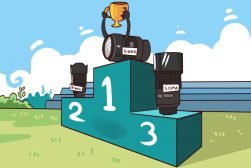
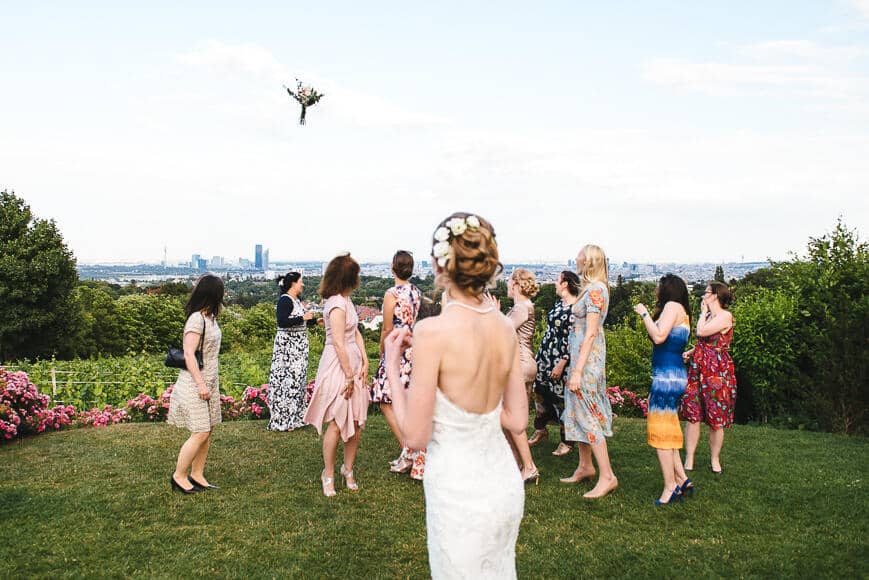

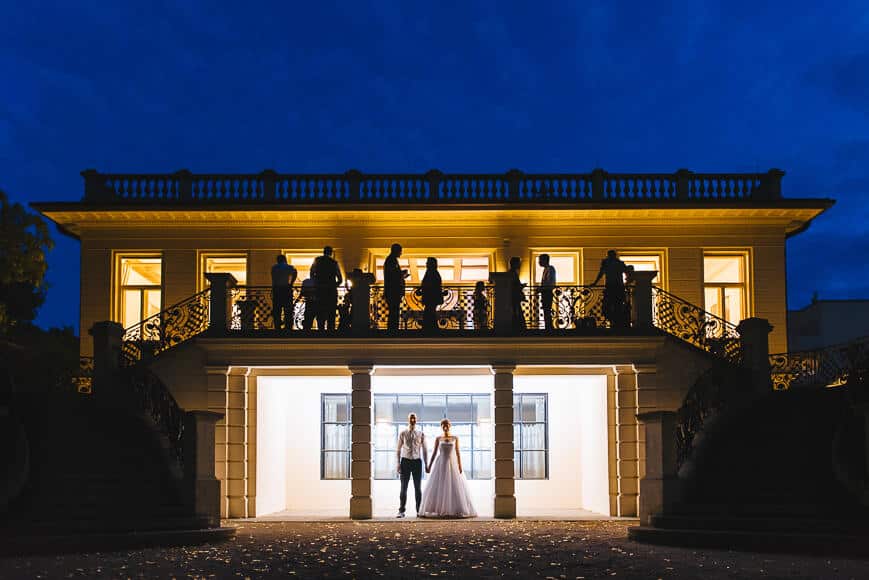
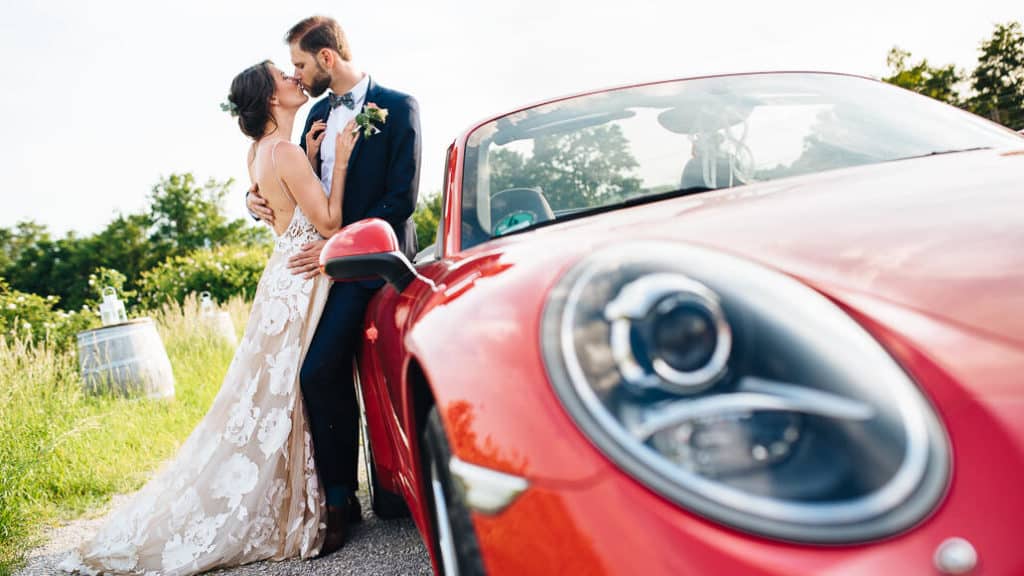
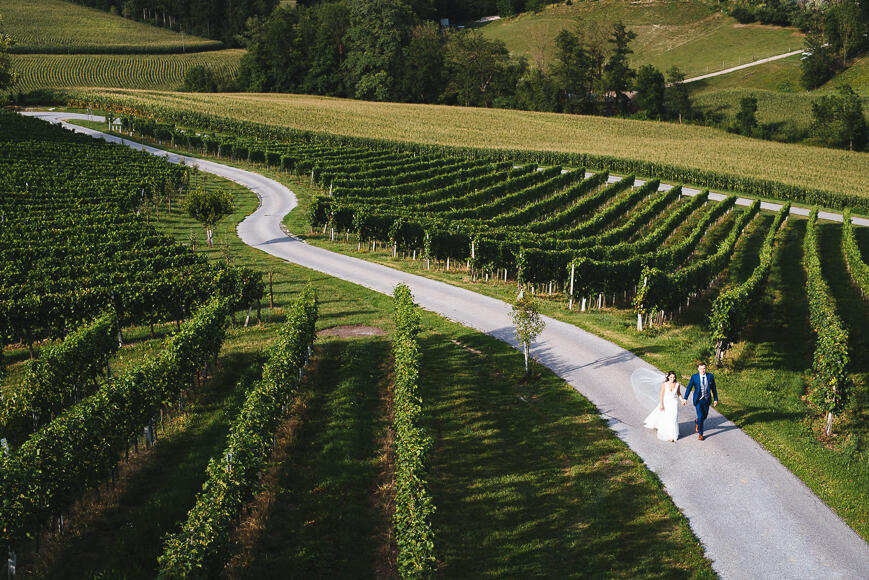

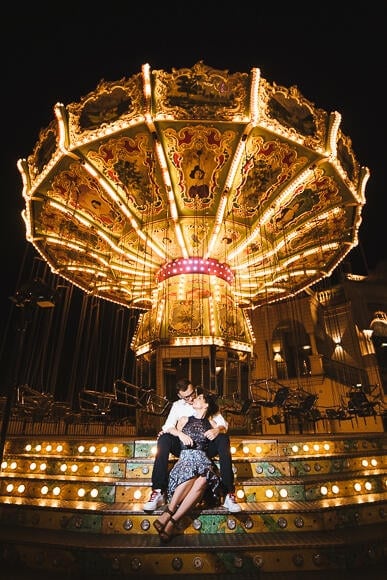
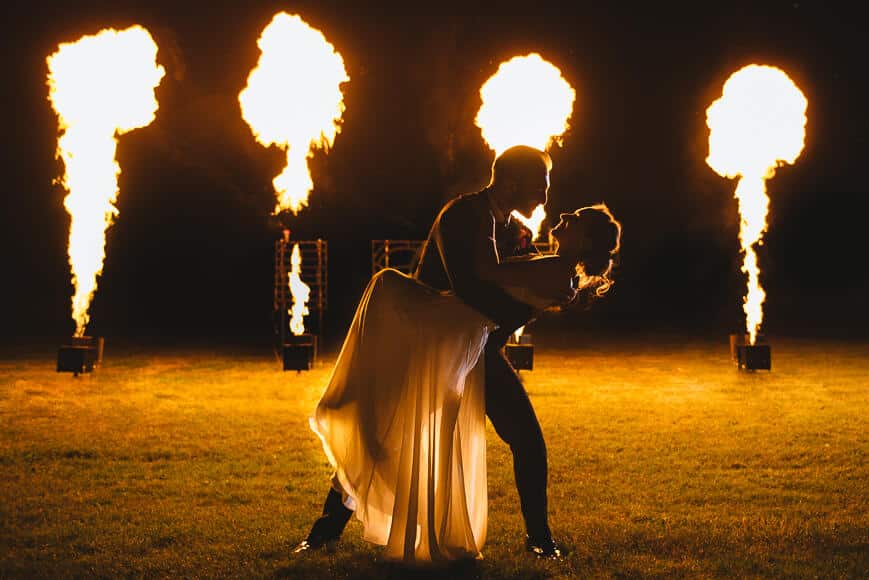
Lukas Bezila
Wedding | Last Updated: February 11, 2021
I am a wedding and business photographer based in Vienna, Austria.
I used to work in a bank, but in 2013 I picked up my biggest passion – photography – and never looked back. I have a family of a wife and two kids.
In my photography, I like to see vivid true colours, authentic moments, geometry and life as raw as it is.
When photographing people I try to be a nice guy, win their trust and let them open up in front of me like a packet full of chips.
My first digital camera was a Nikon D70 and I stayed with Nikon until today. I consider tack-sharp focus very important and this is where Nikon have always backed me up.
At one point I went over to the Fuji and Sony systems. Sony is definitely worth considering but I cannot be befriended by the colours and ergonomy.
As I once wrote, Sony is a nice short-term summer affair, but Nikon is the lady I am married to, who holds me in good and bad times. ☺
I think the most important characteristic of photography equipment is that it doesn’t stand in the way of the photographer’s vision. All of the laboratory tests on sharpness and speed are worthless if I miss the moment.
The worst that can happen is when the photographer plays with his/her camera and does not connect with the person standing in front of him/her.
The camera is just a means to get my vision on paper, nothing more.
Cameras
I am shooting with two of the Nikon D750 (N), because of its reliable focus, good ISO performance, tiltable display and light weight. I use a back focus button, the focus is set to continuous and I move the focus point with the joystick across the finder.
I find the concentration of the focus points rather tight and hope this will improve in the next version. White balance is always on auto. I am mainly in manual mode (sometimes paired with ISO auto), and switch to aperture priority if I am sure there is enough available light.
The fewer settings I have to adjust on the go, the more I can concentrate on my subject and creativity.
Lenses
Regarding lenses, I checked the usage statistics from the 2019 wedding season in Lightroom and found out that 42% of my pictures were made with Sigma 35mm f/1.4 Art, 20% Sigma 50mm f/1.4 Art
, 15% Nikon 24-70mm f/2.8G
non-VR and 15% Nikon 18-35mm f/3.54.5
.
I used to use Nikon 85mm f/1.8 a lot but this year the lens accounted only for 5% of the photos.
Usually, I am equipped with two Nikon D750s coupled with 35mm or 50/85mm lenses hanging in a Spider Holster belt
.
A) Sigma 35 1.4 Art – Evergreen in most photographer’s bags. Extraordinary lens for a friendly price. I plan to replace it with a Nikon 28mm f/1.4
, which I was able to test on several weddings and would allow me to get even closer.
B) Sigma 50mm f/1.4 Art – Slowly replaced my Nikon 85mm f/1.8
for couple shoots. Great sharpness and bokeh. One problem I have with the Sigma lenses is that despite being from the same ART series their glass gives different colours. For example, when I shoot with 35mm and 50mm I have to adjust the white balance separately for each lens.
C) Nikon 18-35mm f/3.5-4.5 – In my opinion, the most underrated Nikon lens. At only 385g the lens provides a very useful focal range. If I could take only one lens for travel, this would be it. I use it for location and all party shots and of course as a travel lens.
D) Nikon 24-70mm f/2.8 non-VR – Versatility and autofocus are the main advantages of this lens. I use it whenever I have no clue what is going to happen ☺ and at the same time it works as a backup for all other lenses.
E) Nikon 85mm f/1.8 – This is a great, lightweight lens that I use mainly in the church and receptions if I want to be a fly on the wall.
Lights/Triggers
I’ve been using the Godox ecosystem for the last four years. At the time I started to use it, it was the only company that offered all different types of flashes to be triggered via radio by only one trigger. It simplified my flash work tremendously.
I always prefer natural light, but if the quality is bad, I am happy to pull out my window out of the pocket.
Before getting into detail, I use all flashes in manual setting on 1/8 of power. The reason is that this is the max power that still gives me continuous shooting possibility. I usually use flashes at receptions or reportage when people are moving.
What I do not like is when I make, say, a burst of five photos and only two of them are lit by the flash because it didn’t have enough time to recycle. This mainly happens if I shoot at 1/1 or ½ of flash power. The higher the power, the longer the recycling time.
F) Godox Xpro trigger allows me to easily control several groups of flashes wirelessly.
In the beginning, it wouldn’t trigger when I was very close to the flash with my camera. Later I found out that you can select from two distance ranges, 0-30m and 1-100m, in the MENU/DIST. I have mine set to 0-30m as I am never more than 30m away from my flash. This solved the problem.
Godox Xpro is much easier to use as the older Godox X1
and a preferable option if you are getting into the system.
G) Godox v860II. The entry gate to the Godox system. Surprisingly sturdy, mine fell several times from a height of 2.5m and is still working. The strong battery lasts a whole wedding and is connected wirelessly via radio signal to the Godox Xpro
. IMHO the best hotshoe flash on the market.
H) Godox V1 is the newbie in the family and has the advantage of a round magnetic head over the Godox v860II
. When projecting the flash light on a homogenous wall the light pattern looks better – but in real-world usage, I haven’t been able to spot much difference.
On the other hand, I noticed that the V1 gives a little bit less light compared to the v860ii when bouncing off the wall. Another good example of a product that looks great on paper, but doesn’t make much difference in real life.
I) Godox AD200 – I exclusively use it with a bulb head and (J) Walimex pro 109cm reflex umbrella softbox with a diffusion sheet. The advantage over the v860
is that the light head is located centrally (hotshoe flashes are like 10-15cm off the centre), the bulb head spreads the light evenly and avoids hotspots and finally, the extra power provides more flexibility.
The umbrella has a similar shape to a light stand and is good for transport. It takes me exactly 42 seconds to build the setup. A lifesaver for group shots in the dark, first dance and dark churches.
K) Godox AD600 Pro – I use this big boy for business portraits and advertising jobs. I like that it packs lots of power, has a stable colour mode and doesn’t have cables. I usually pair it with an Elinchrom Rotalux Deep Octabox 100 cm
.
Bags/Straps
My back and I are absolutely in love with (L) Spider Holster dual belt. I tried Hodfast but had a sore back and I do not like to be leashed on a strap. I like to photograph with a tilt display from the ground or above the heads and put down the cameras whenever I have a break.
Spider Holster is ideally used with lighter setups (2 x Nikon D750s + 35 and 50mm Sigma Art
work just fine). When I had a Nikon 70-200mm
mounted, I felt like my pants would drop in the most inappropriate moment.
To be honest, it is probably not as safe as other systems, but in the five years that I’ve been using the belt heavily, I’ve dropped my camera only twice.
To sum it up, it is a great system that always makes for funny ice breakers at weddings. Many times I’ve been asked by the guests: “Are you on duty, sheriff?”
Hardware & Software
I cull my photos in Photo Mechanic, adjust them in Lightroom and deliver via Pixieset.
Misc.
I usually have a small mirror in my bag, which I use for reflections or offer a lady to adjust her makeup, and a small mat (M) a lady can sit on.
I’ve spent too much time on the internet researching equipment only to find out that the tech specs are less useful in real life than I thought. Review reading for me is a procrastination that drives me away from more important things, like learning or getting the job done.
So my advice: choose a system, stick to it and spend more time learning and shooting.
www.lukasbezila.com | @lukasbezila.weddings

Check out these 8 essential tools to help you succeed as a professional photographer.
Includes limited-time discounts.







